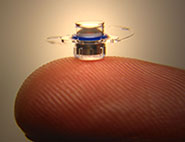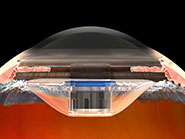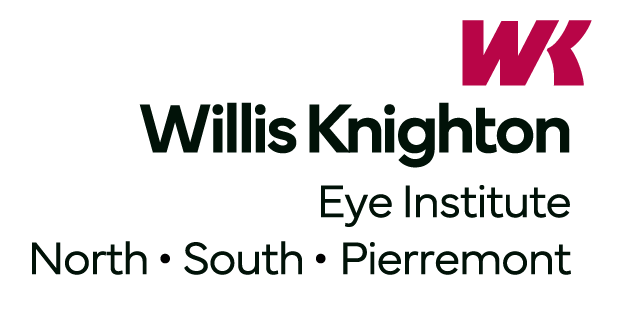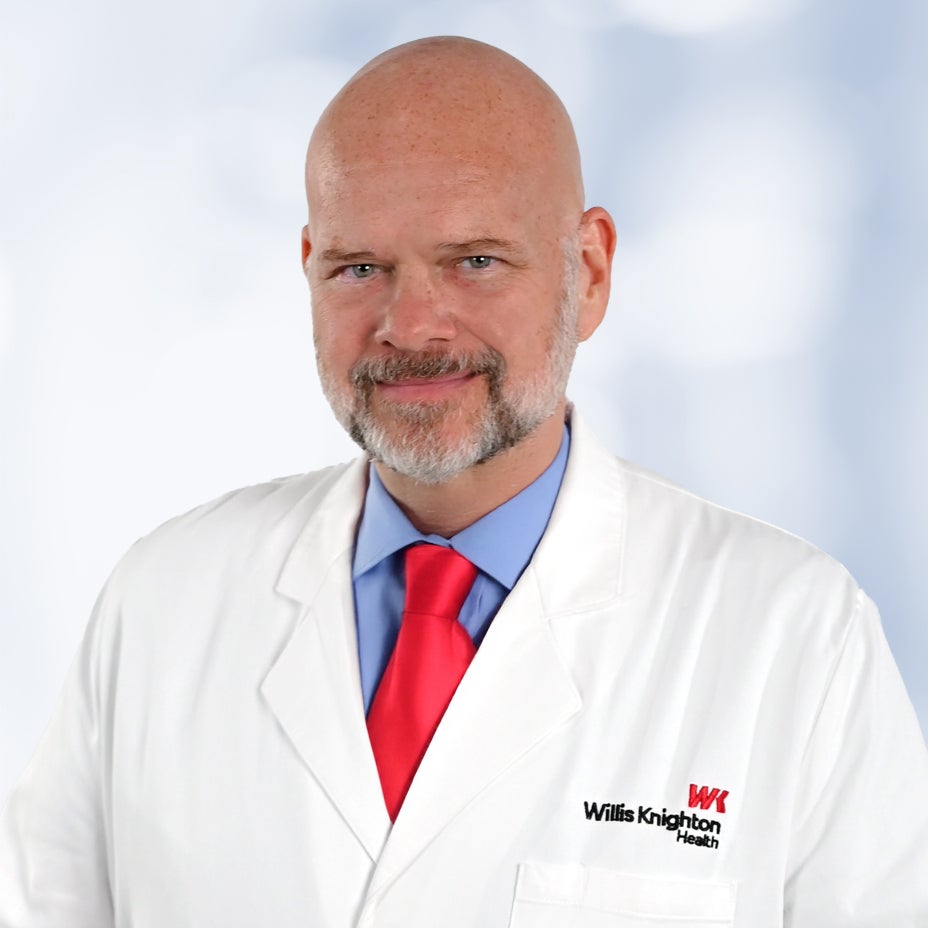Telescopic Surgery for Macular Degeneration
The Technology
 The Vision Care Implantable Miniature Telescope (by Dr. Isaac Lipshitz) offers new hope to patients with the most advanced form of age related macular degeneration (AMD). Christopher Shelby, MD, ophthalmologist with Willis Knighton Eye Institute, was the first surgeon in our region to offer this new technology.
The Vision Care Implantable Miniature Telescope (by Dr. Isaac Lipshitz) offers new hope to patients with the most advanced form of age related macular degeneration (AMD). Christopher Shelby, MD, ophthalmologist with Willis Knighton Eye Institute, was the first surgeon in our region to offer this new technology.
Eligibility
The FDA-approved implant is used as part of the CentraSight™ treatment program for age-related macular degeneration in people who are 65 and older and who have a cataract in at least one eye. Here are the general requirements a person must meet to be eligible:
- Diagnosis of irreversible, end-stage AMD resulting from either the dry or wet form of the disease
- No longer a candidate for drug treatment of your AMD
- No cataract surgery in the eye in which the telescope will be implanted
- Meet age, vision and cornea health requirements
Process
 This plan begins with an evaluation of the patient’s condition by the CentraSight™ team at the Willis Knighton Eye Institute. If the person’s condition meets eligibility requirements, the eye surgeon implants this tiny telescope, about the size of a pea, in one eye behind the iris, or colored part of the eye.
This plan begins with an evaluation of the patient’s condition by the CentraSight™ team at the Willis Knighton Eye Institute. If the person’s condition meets eligibility requirements, the eye surgeon implants this tiny telescope, about the size of a pea, in one eye behind the iris, or colored part of the eye.
Once implanted, the small telescope projects images on the healthy part of the patient’s central retina, enlarging images 2.7 times and allowing patients to see things they have been missing.
The implant is used in only one eye, so the patient must learn how to adapt to the technology and to rely on the other eye for peripheral vision. For this reason a therapist is part of the treatment plan to help patients learn these skills.
The Team
The CentraSight™ treatment team at Willis Knighton Eye Institute includes two ophthalmologists, an eye surgeon and a retinal specialist, as well as a low-vision optometrist and an occupational therapist. All work together to assure that patients get the best results from the implant.
Benefits
While this technology is not a cure, it certainly improves quality of life for patients. However it does provide hope for people who have what was once considered a hopeless disease. While this will not provide vision for all former activities, a person who has the implant will have notice major improvements in the ability to read the newspaper, cook, watch television, and participate in hobbies like knitting, card games, and gardening. Best of all, it will allow him or her to once again recognize their loved one’s facial expressions, which is priceless!
The following Willis Knighton Eye Institute doctors offer this procedure:
Willis Knighton Eye Institute now offers Telescopic Surgery for Macular Degeneration
The Vision Care Implantable Miniature Telescope (by Dr. Isaac Lipshitz) offers new hope to patients with the most advanced form of age related macular degeneration (AMD). Christopher Shelby, MD, ophthalmologist with Willis Knighton Eye Institute, was the first surgeon in our region to offer this new technology. The FDA-approved implant is used as part of the CentraSight™ treatment program for age-related macular degeneration in people who are 65 and older and who have a cataract in at least one eye.
The following providers at Willis Knighton Eye Institute treat Macular Degeneration or Age Related Macular Degeneration (ARMD):
Copyright © 2025 Willis Knighton Eye Institute. All rights reserved.



